

Ben Zachariah
CarExpert's top five ute reviews of 2025
19 Hours Ago
Is it "settling" to opt for the Ford Ranger's bi-turbo diesel four-cylinder engine over the new V6, or is the smaller engine the one to pick?
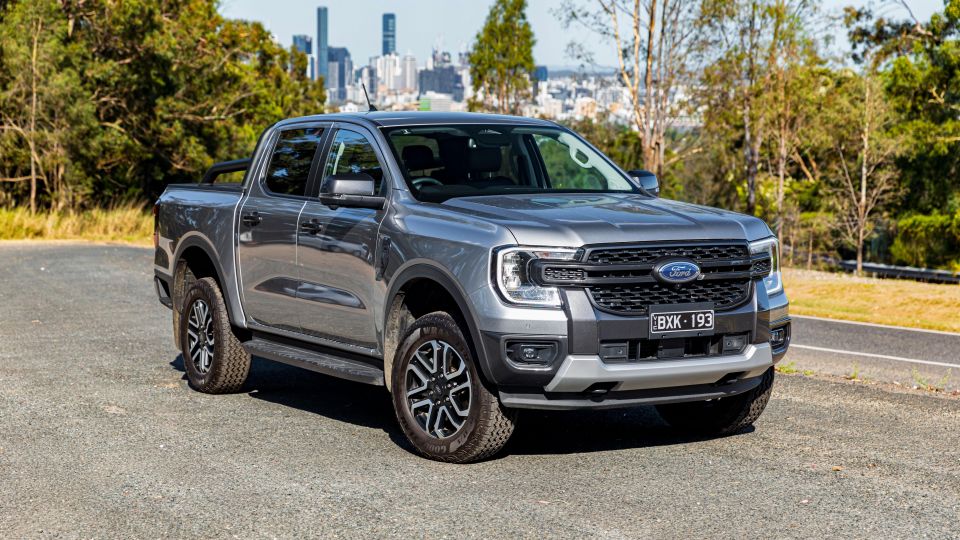
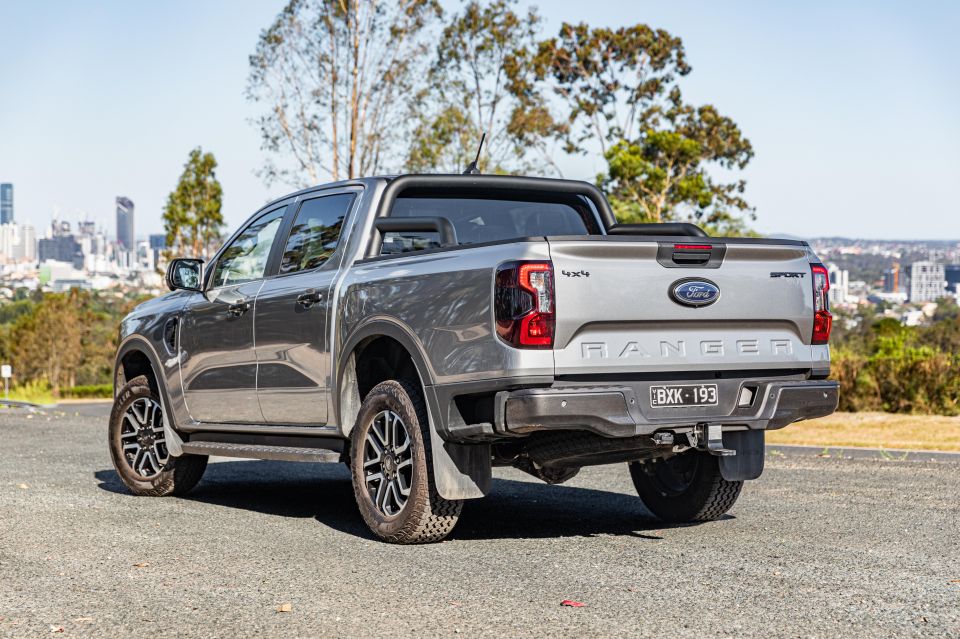

Quickly see how this car stacks up against its competition. Select any benchmark to see more details.
Where expert car reviews meet expert car buying – CarExpert gives you trusted advice, personalised service and real savings on your next new car.
Take a look at any Ford Rangerowners’ group online right now and the most commonly asked question is this: do I get the four-cylinder or the V6?
The lure of a turbo-diesel V6 is strong, particularly as among the Ford’s rivals only the Volkswagen Amarok can also boast such an engine and it’s mighty old, with a Ranger-based successor not due until April.
But if you put in an order for a new V6 Ranger at the time of publishing (December 2022), you likely won’t take delivery of it until the third quarter of 2023. Meanwhile, the four-cylinder Bi-Turbo models have “wide availability” according to Ford Australia, which essentially means no waits.
It raises the question, then: is it worth just passing on the V6 and just opting for the four-cylinder? How much of a step-down could the four be, really?
The 2023 Ford Ranger line-up consists of XL, XLS, XLT, Sport, Wildtrak, Platinum and Raptor variants, with the XLT, Sport and Wildtrak the only ones to offer a choice between the 2.0-litre Bi-Turbo four-cylinder and the 3.0-litre turbo-diesel V6.
The price gap between the four- and six-cylinder Sport variants is entirely reasonable. The four is priced at $64,490 before on-road costs, while the V6 is $67,690 before on-road costs.
Our tester came with optional metallic paint ($700), Goodyear Wrangler all-terrain tyres ($500), a spray-in bedliner ($400) and the optional Touring Pack ($1295), bringing the as-tested price to $73,846 drive-away based on a Sydney postcode.

Isuzu is still offering relatively sharp drive-away pricing for its range-topping D-Max X-Terrain of $64,990 drive-away, though comparing list prices reveals less of a gap in the Isuzu’s favour: the penultimate LS-U+, for example, is priced at $63,500 before on-road costs.
Other similarly priced and specified rivals for the Ranger Sport include:
All prices exclude on-road costs.
Ford, like Toyota, does charge a bit of a premium over rival utes, and there are still Wildtrak and Platinum grades above the Sport.
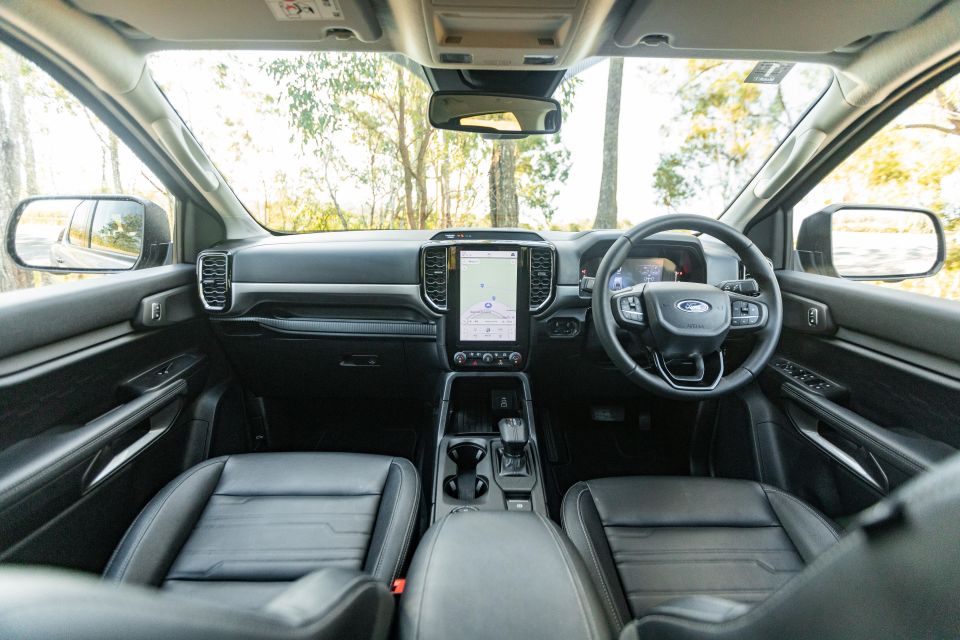
Buy your new car without the stress. It's fast, simple and completely free.

Great service from Travis and team, second time I have used this business would not hesitate to recommend them to anyone
Craig C.
Purchased a Ford Ranger in Sunshine Coast, QLD
CarExpert helped Craig save thousands on his Ford Ranger, now let us save you on your next new car.
Find a dealAs we’ve mentioned before, the Ranger blows away its rivals in terms of in-car tech.
Even its smaller 10.1-inch touchscreen – found on all variants bar the Wildtrak, Platinum and Raptor – is larger than every rivals’, and it boasts a mostly intuitive layout.
We like the vehicle settings shortcut button in the top right-hand corner, though sometimes I would be perturbed by an annoying dropdown menu appearing on the screen.
Coming out of a Ranger with the larger 12-inch screen, you do notice the slightly smaller 10.1-inch diagonal. Without that frame of reference, however, the Sport’s screen is impressively large and is the centrepiece of an attractive dashboard.
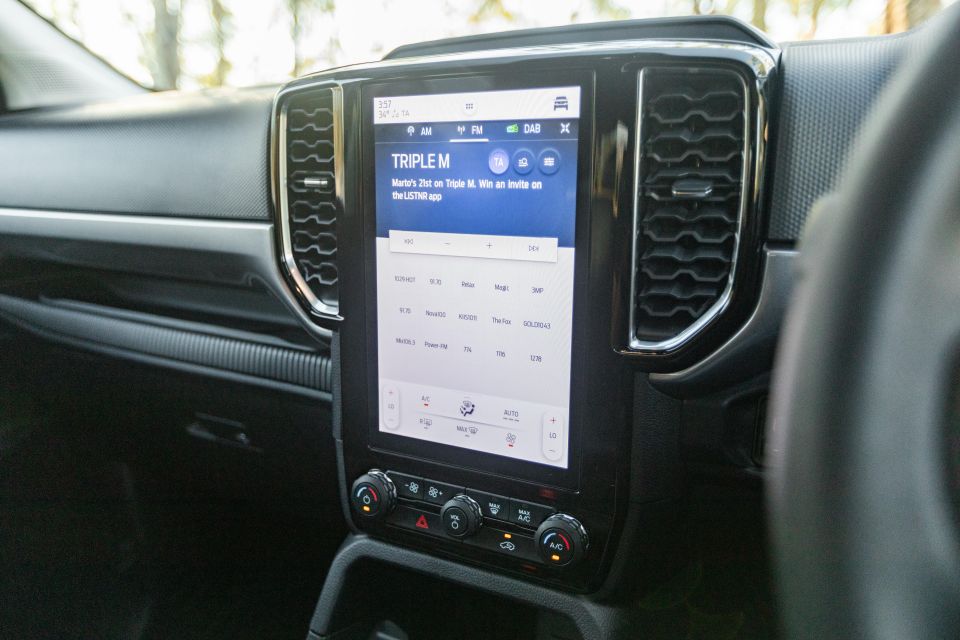
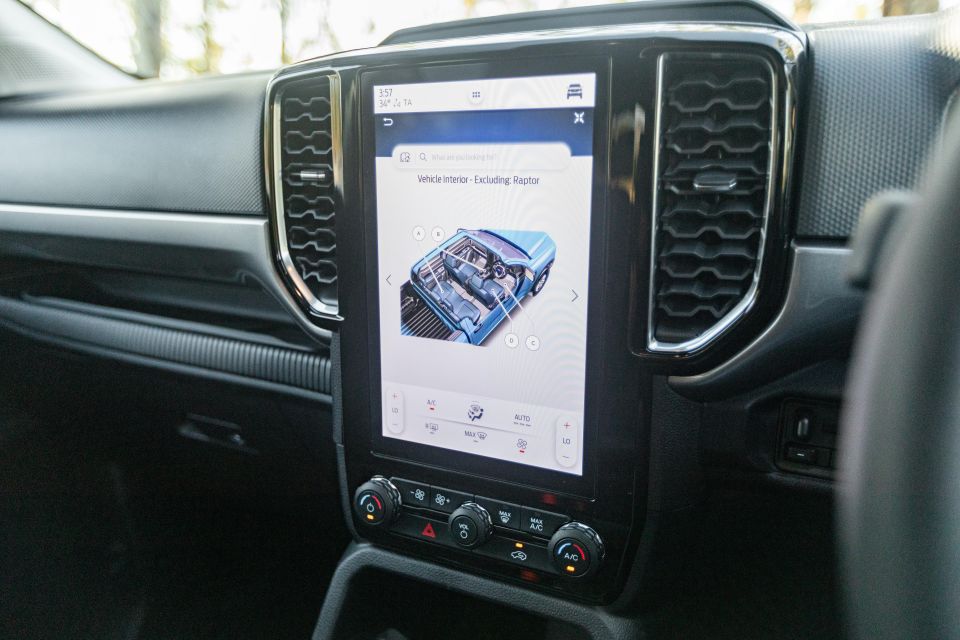
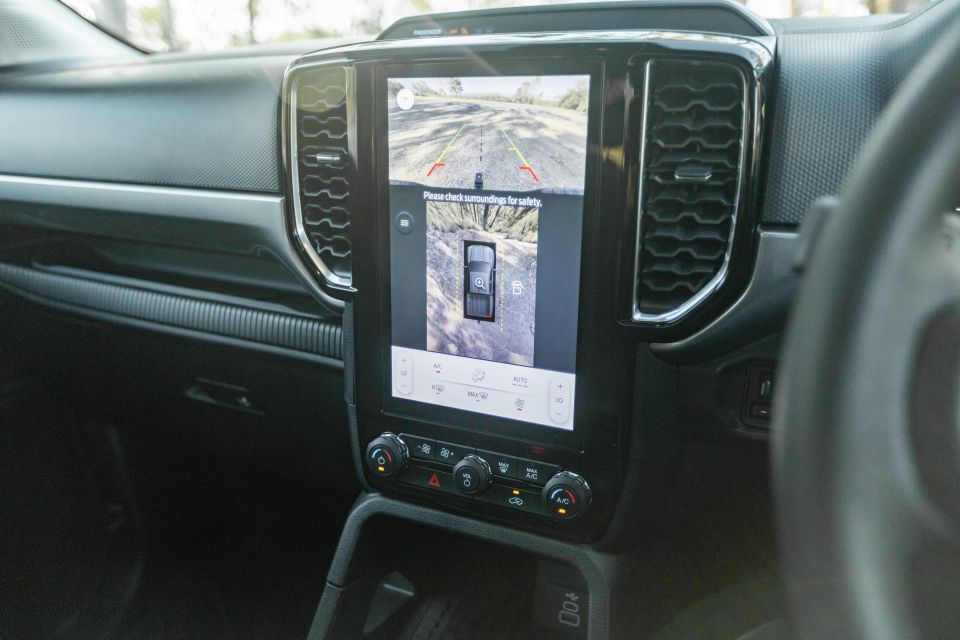
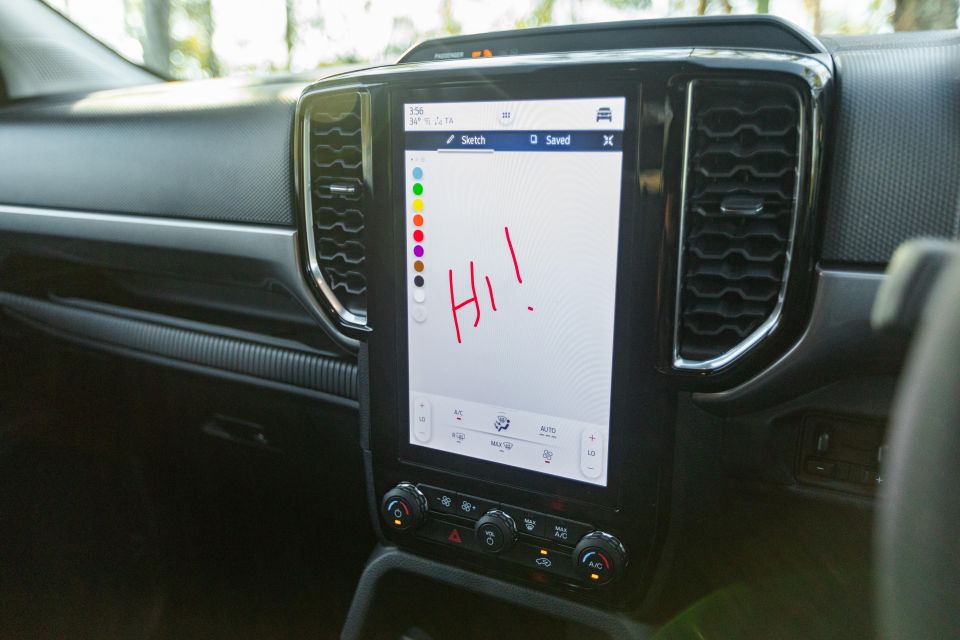
While the climate control can be adjusted on the screen, we love that Ford has included physical controls. We wish more manufacturers did the same.
Nine times of out of 10, wireless Android Auto would connect and whenever it did, it would stay consistently connected.
For some reason in our tester, however, the Android Auto would sometimes not connect wirelessly. This may have been isolated to this vehicle, as we experienced no such issues in an XLT V6 on loan.
You can use the voice assistant with a press of a button on the steering wheel, while your Apple CarPlay or Android Auto assistant can be activated with a long press of the same button if you don’t do voice prompts.
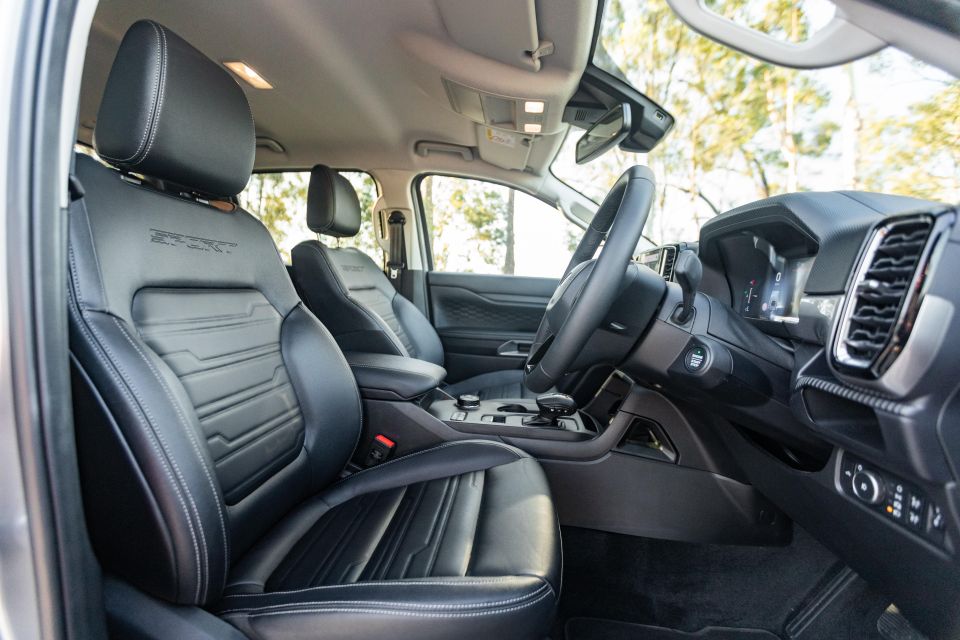
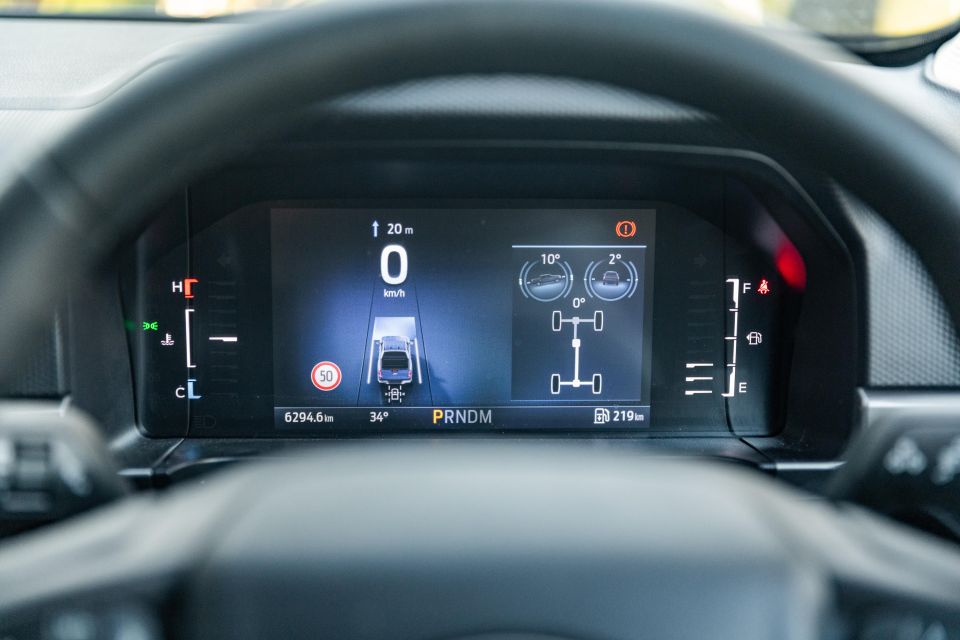
There’s a wireless charging pad at the base of the centre stack which is located in eyeshot, avoiding the issue with some pads where you can’t see if your phone is actually charging.
The interior is hard-wearing in traditional ute fashion, but Ford’s designers have put soft-touch materials where they’re most needed and attempted to add visual contrast elsewhere.
The door tops are padded and the trims are nice and wide, perfect for the ol’ tradie arm rest in traffic, while the centre console bin has a particularly soft cover. Said bin is also decently deep, though there’s no second glove box like on the Wildtrak, with a slightly rubberised shelf in its place.
Also missing from the Wildtrak: pop-out cupholders on either side of the dash. You do still get properly sized cupholders in the centre console, however, as well as a slot just the right size for fries from ‘Maccas.
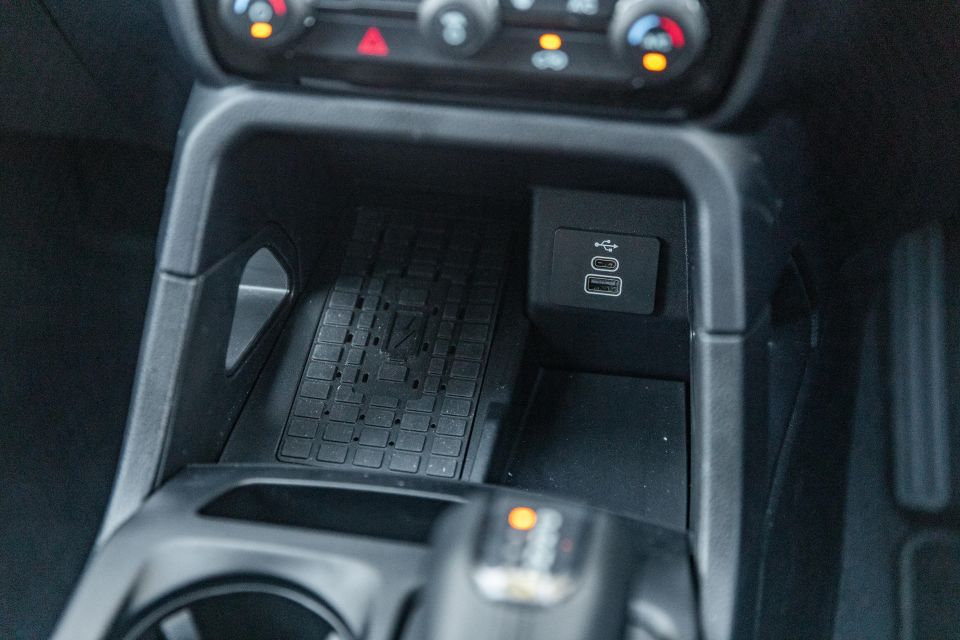

Greyish gloss metal trim and unusual patterned hard plastic can be found on the front of the dashboard, helping to break up the black plastic. There’s also some unusual patterned plastic trim on the doors, somewhat reminiscent of the Escape.
The doors close with a solid thunk, but assembly quality isn’t perfect – the ‘legs’ at the base of the touchscreen can be wobbled, and the panel gaps here looked uneven.
Speaking of the doors, the internal handles are concealed within the arm rests. They’ll confuse your passengers at first but you get used to them, to the point where I was reaching for the arm rest to open the door in my own car. Nevertheless, this is an unusual design choice.
The seats are comfortable, though the D-Max may have a slight edge here, while the steering wheel has tilt and telescopic adjustment.
Ahead of the wheel is a digital instrument cluster that, while not as flashy as the one in the Platinum and Raptor, is easy to read and works well. It’s flanked by vertical readouts for engine temperature and fuel level.

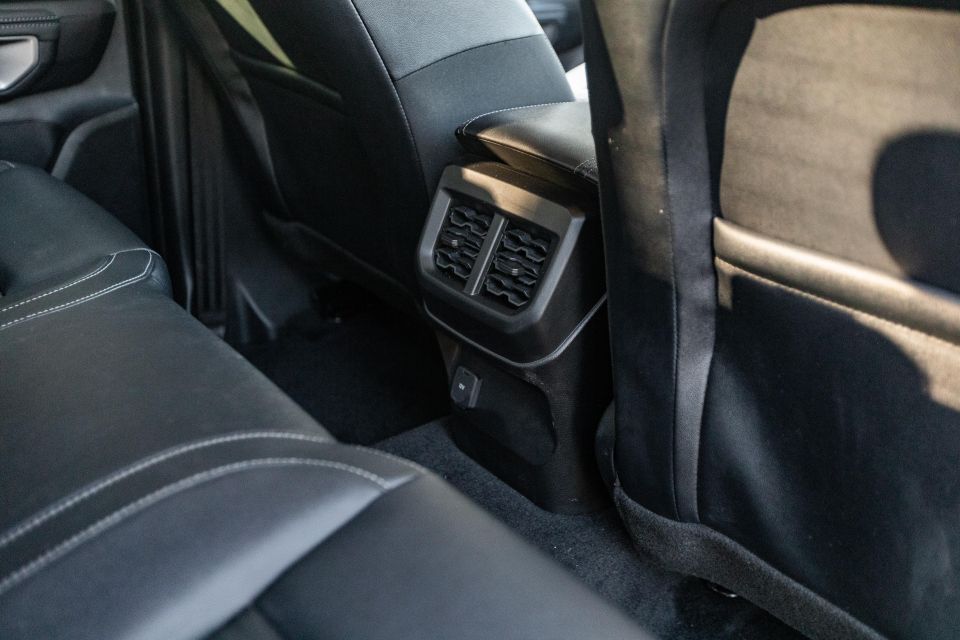
You can also use the FordPass app to view information like the fuel level remotely or to lock and unlock the vehicle, with the level of connectivity on offer in the Ford surpassing that of rivals.
Step into the back and there’s sufficient rear-seat space, though it’s not the roomiest ute in its class. The driveline hump cuts into centre-seat occupant legroom and it’s rather wide, though not the tallest around.
There are rear air vents back here, plus a 12V outlet. The lack of USB outlets, however, is disappointing.
If you’re using the Ranger as a family vehicle, as so many people are these days, you’ll find ISOFIX and top-tether anchor points for the two outboard seats.
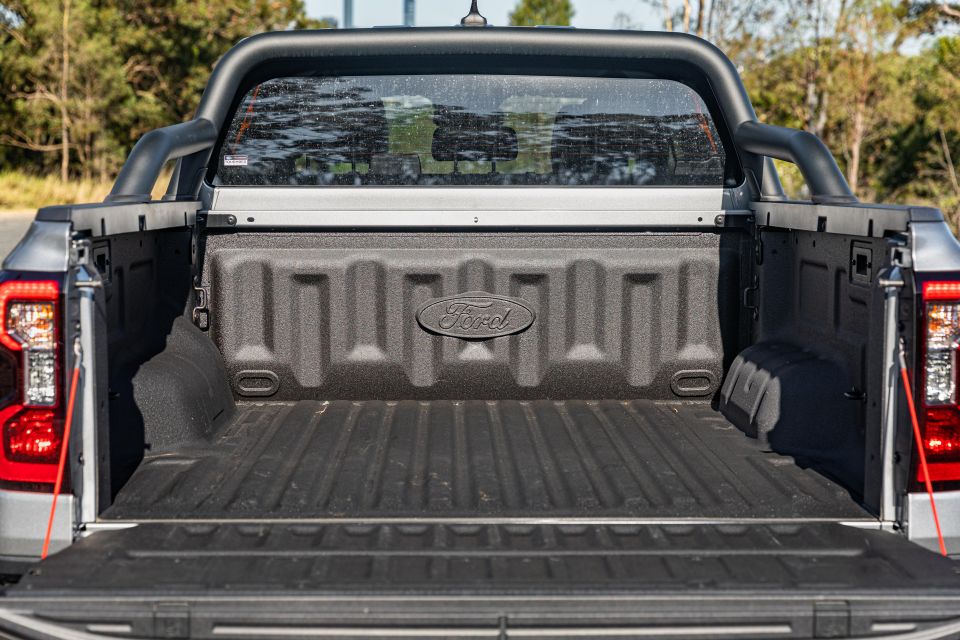

Accessing the tub is easy thanks to a clever and sturdy-feeling rear box step on each side, allowing you to climb over the sides rather than clamber over the tailgate or stand on a slippery tyre.
There’s a 12V outlet in the tub like the last Ranger – and unlike numerous rivals – but the 400W inverter available overseas can’t be sold here due to local regulations. Ford touts the ability to fit a Euro-sized (1200mm x 800mm) pallet between the wheel arches.
There are three tie-down points on each side: two horizontal and one vertical. On the tailgate, you’ll also find two clamp pockets, while the Touring Pack includes a cargo management system featuring an adjustable internal load rail so you can configure tie-down cleats.
The Touring Pack also includes Ford’s clever zone lighting, which allows you to configure a combination of the headlights, puddle lamps, and box lighting to cast light around the vehicle – a clever idea if, for example, you’re out camping.
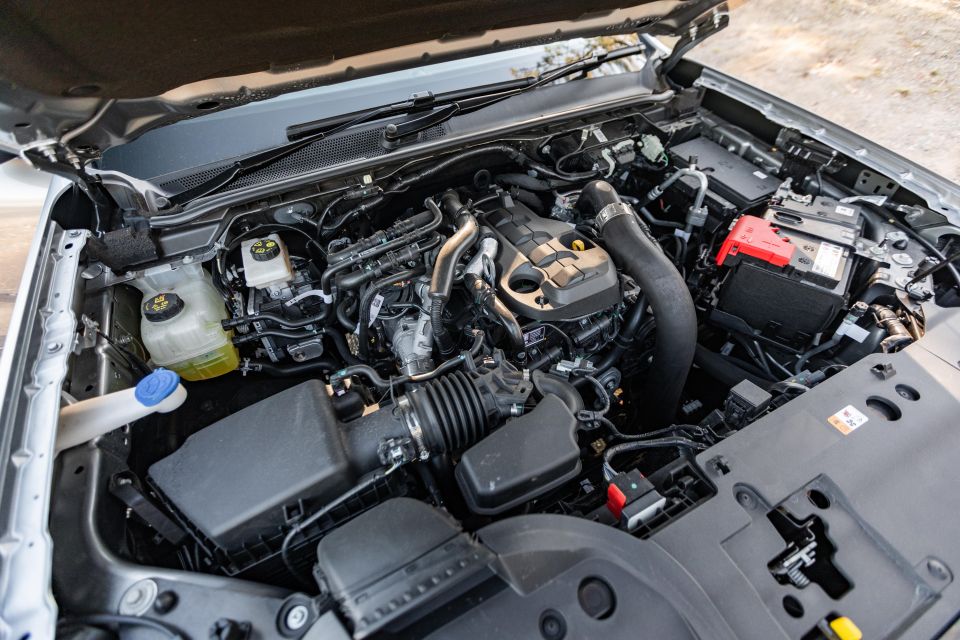
Our tester came equipped with the aforementioned 2.0-litre Bi-Turbo four-cylinder diesel engine, which produces 154kW of power at 3750rpm and 500Nm of torque between 1750 and 2000rpm.
That’s down 30kW and 100Nm on the optional V6, but up 29kW and 95Nm on the entry-level single-turbo 2.0-litre diesel.
It’s also essentially line-ball with the Toyota HiLux, which produces 150kW and 500Nm when equipped with the 2.8-litre turbo-diesel four and six-speed automatic transmission.
On a loop consisting of a mix of inner-city, suburban and highway driving, we averaged 9.9L/100km. Over the course of a week, this increased to 11.5L/100km.
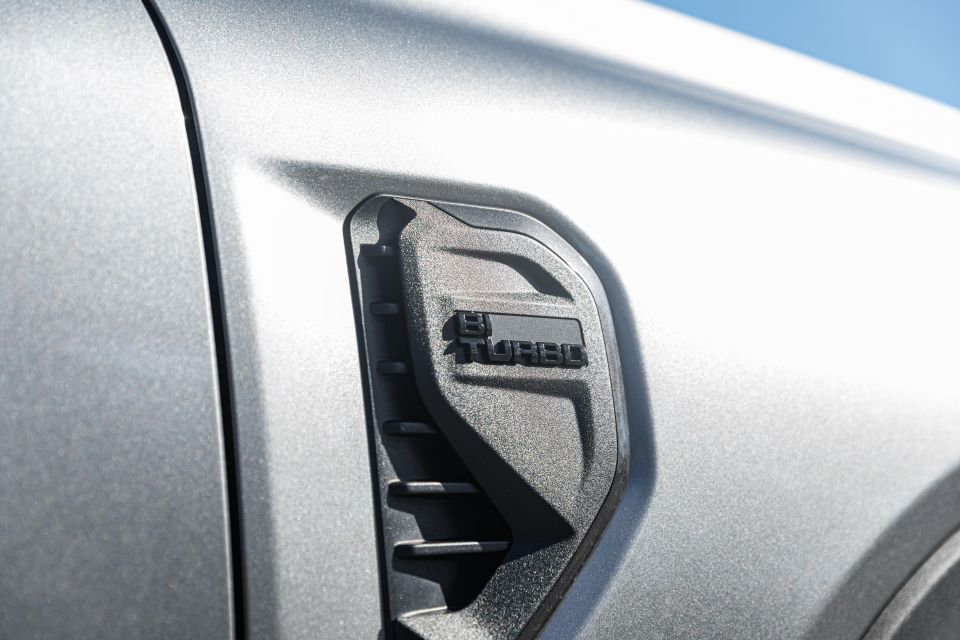
During a stint with an XLT V6, I was able to get overall fuel consumption down to 9.0L/100km albeit with more highway driving, so it’s not as though it’s dramatically thirstier.
Indeed, its official ADR combined cycle claim is 8.4L/100km in Sport guise, compared to 7.6L/100km for the four-cylinder.
Regardless of whether you go for the Bi-Turbo or the V6, braked towing capacity is 3500kg.
Payload in the Sport Bi-Turbo is 942kg, with a gross vehicle mass of 3230kg and gross combination mass of 6350kg.
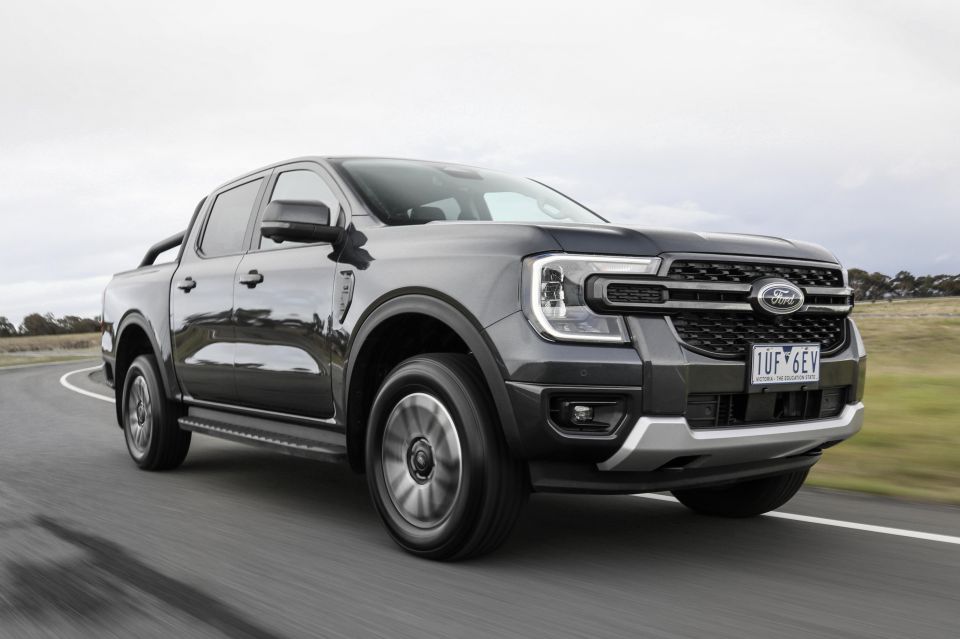
The outgoing Ford Ranger remained one of the best utes to drive in this segment even in its twilight years, so it’s no surprise the new ute is a class leader.
The steering in particular is top-notch. It has a nice, meaty weighting yet never feels overly heavy at low speeds, making the Ranger quite easy to park for a ute. The tiller feels nice and fluid, and makes the Ford confidence-inspiring to pilot.
Ride quality is among the best in the segment, with impacts nicely damped. Unladen, you can still feel more movement in the structure than the related Everest, including some frame shake.
But short of a Raptor or a Mazda BT-50 with the optional suspension upgrade, the Ranger is top of the pops when it comes to ride comfort.
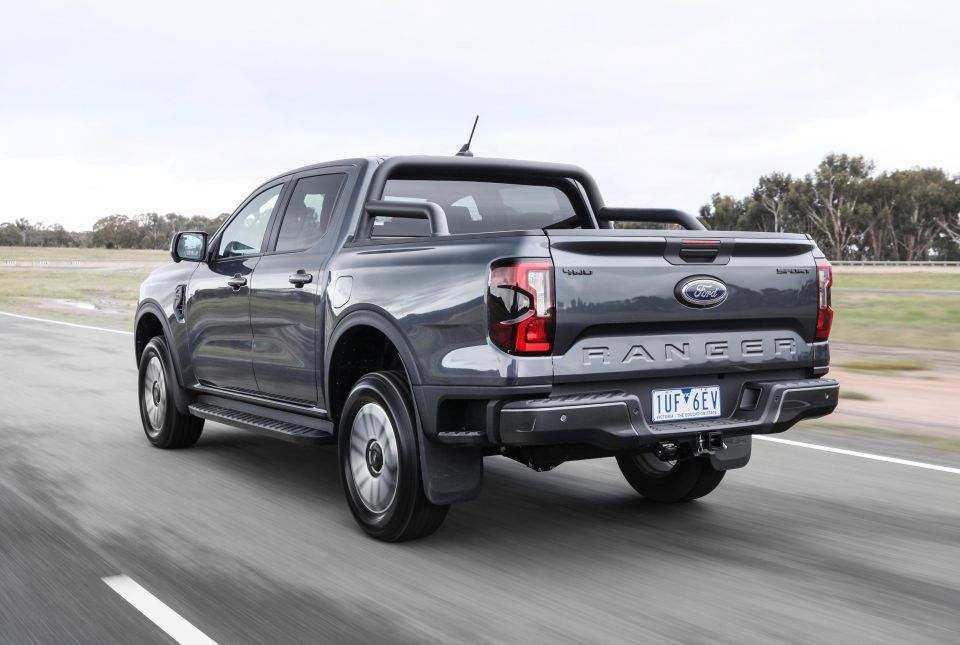
That also applies to its performance on unsealed roads, where it proves quite comfortable even as you blast down a dirt road at 80km/h.
The Ranger’s rear end can feel a little loose on these surfaces, at least unladen and in two-wheel drive mode, but there are selectable high- and low-range four-wheel drive modes, if no full-time four-wheel drive.
Ford also gives you the option of Normal, Eco, Sand, Mud/Ruts, Slippery and Tow/Haul drive modes.
Unlike the old bi-turbo Ranger, there’s no automatic stop/start available. Considering how obtrusive this is in the four-cylinder Everest, we’re not mourning its loss, even if we would like to hear fewer clattering, idling diesels around.
The four-cylinder Ranger doesn’t push you back in your seat quite as much as the V6 – we recorded 0-100km/h times of 8.2 seconds in an XLT V6 versus 9.6 seconds in a Wildtrak Bi-Turbo – but it never feels wanting for power.
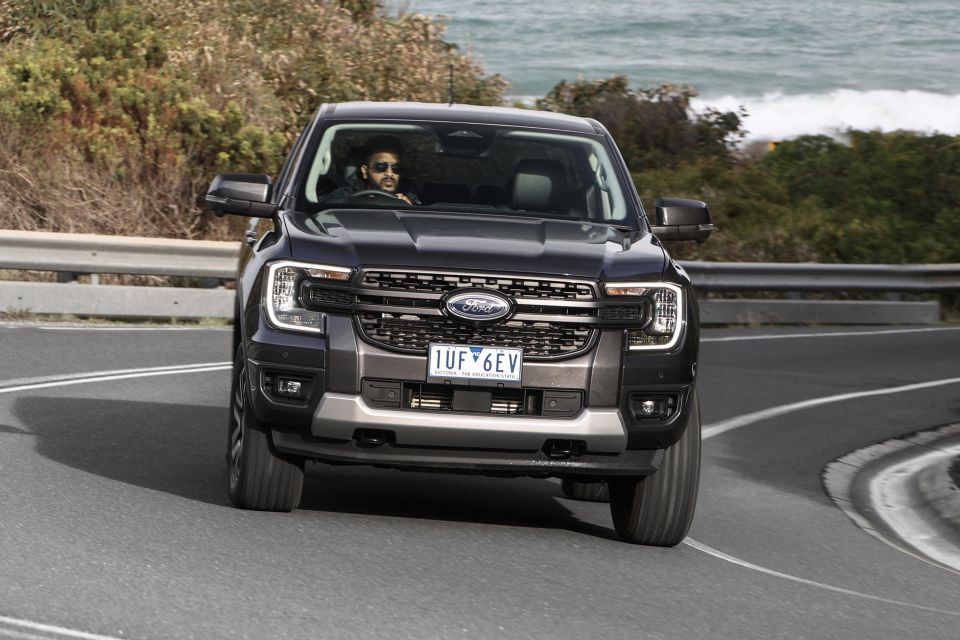
That said, though it has the edge in power and torque over a D-Max or BT-50, it doesn’t necessarily feel it on the road.
That’s not due to any poor calibration of the transmission, mind you. The 10-speed automatic may have a lot of cogs but it shifts smoothly and unobtrusively and doesn’t feel as though it’s hunting for ratios.
The only dubious aspect of the Ranger’s dynamics are its brakes, which could have a bit more bite.
The cabin is quite hushed at all speeds. There’s a minimal amount of wind noise around the mirrors at highway speeds, but otherwise the cabin is thoroughly pleasant. The engine note is as uninspiring as any four-cylinder diesel ute, but at least it isn’t too obtrusive.
The Ranger proves to be quite an agreeable highway cruiser, in large part due to its combination of adaptive cruise control and lane-centring for Level 2 autonomous driving.
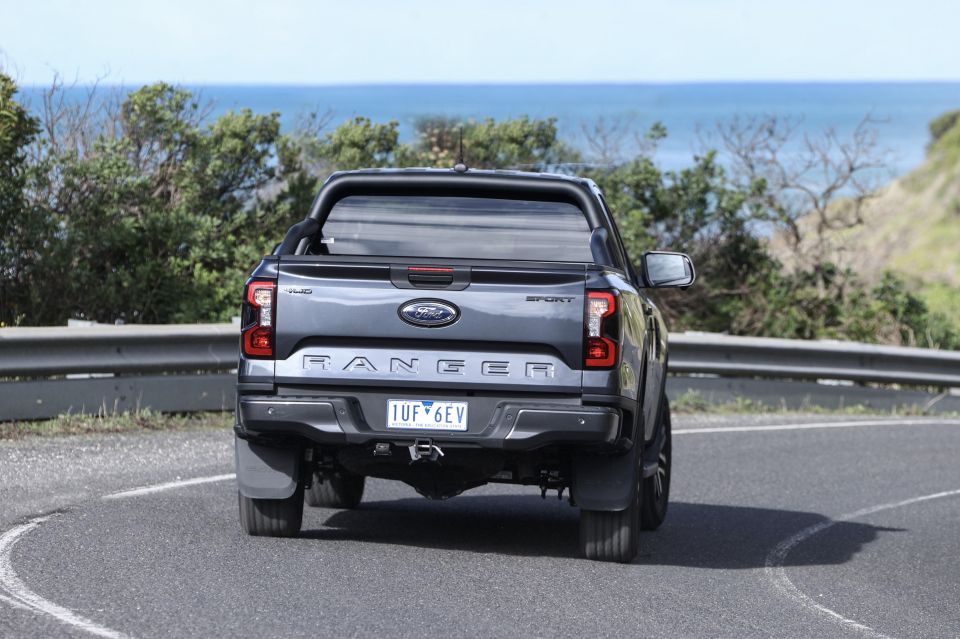
Where expert car reviews meet expert car buying – CarExpert gives you trusted advice, personalised service and real savings on your next new car.
We’ve driven vehicles from premium brands with Level 2 technology that isn’t as smoothly calibrated as the Ranger’s. There’s a feeling of smooth, sweeping inputs around bends instead of smaller, jerkier ones, and the vehicle always feels confidently positioned within its lane.
The traffic sign recognition also works well, even being able to distinguish temporary speed limits like school zones. The intelligent speed limiter uses this system to detect speed limits, but it’s not always good at detecting relevant speed limits.
For example, on one occasion while driving on the highway it detected a much lower speed limit on a sign on an off-ramp – suffice it to say, it’s not ideal to suddenly find your car slowing to 60km/h on a 100km/h road.
The steering wheel switchgear is straightforward for functions like the speed limiter and adaptive cruise, while driver assist system settings can be further tailored in the touchscreen. For example, you can easily adjust the tolerance of the intelligent speed limiter.

The quality of the reversing camera and our tester’s optional surround-view camera is superb, and puts most rivals to shame.
It’s just a pity the camera quickly switches off once you shift out of reverse, and there’s no readily accessible hard shortcut button.
Instead, you need to go into the vehicle menu to turn it back on manually, which is a couple more button presses than ideal when you’re trying to quickly straighten up in a parking lot.
Finally, a good set of headlights is important, particularly if you’re out in regional Australia. The Ranger’s LEDs are nice and bright and the presence of cornering lights is particularly welcome.
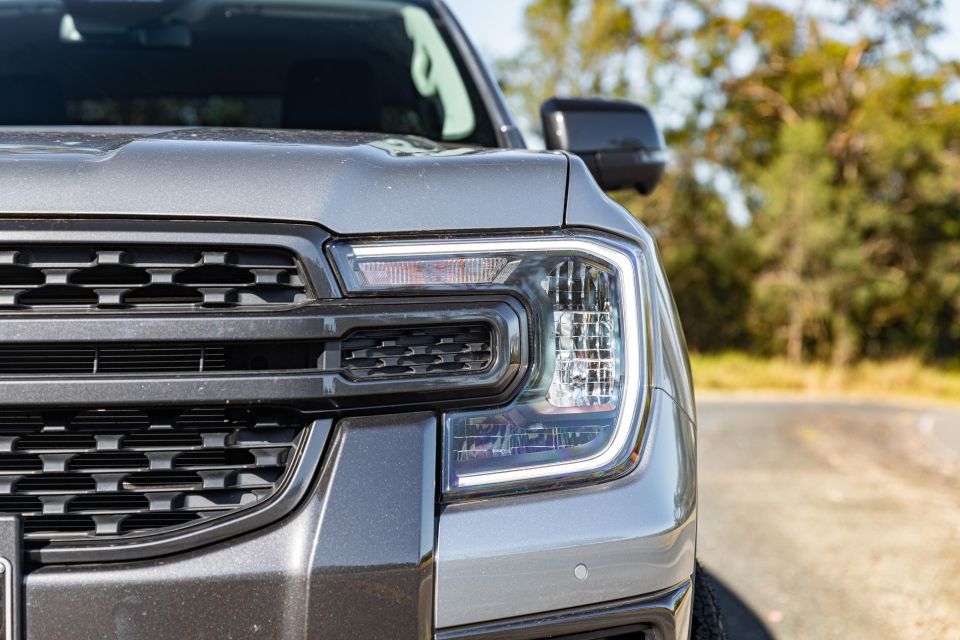
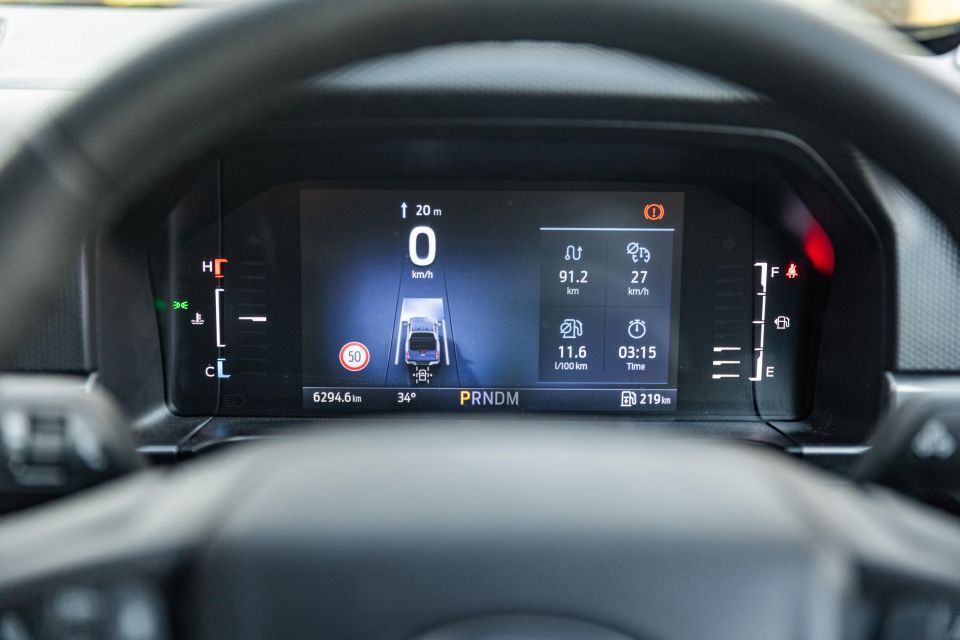
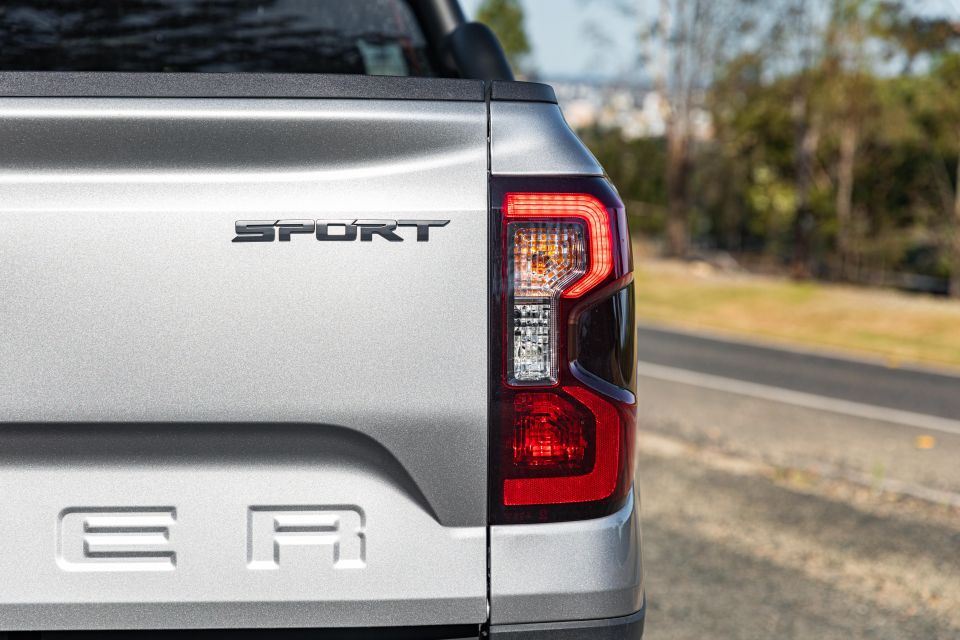
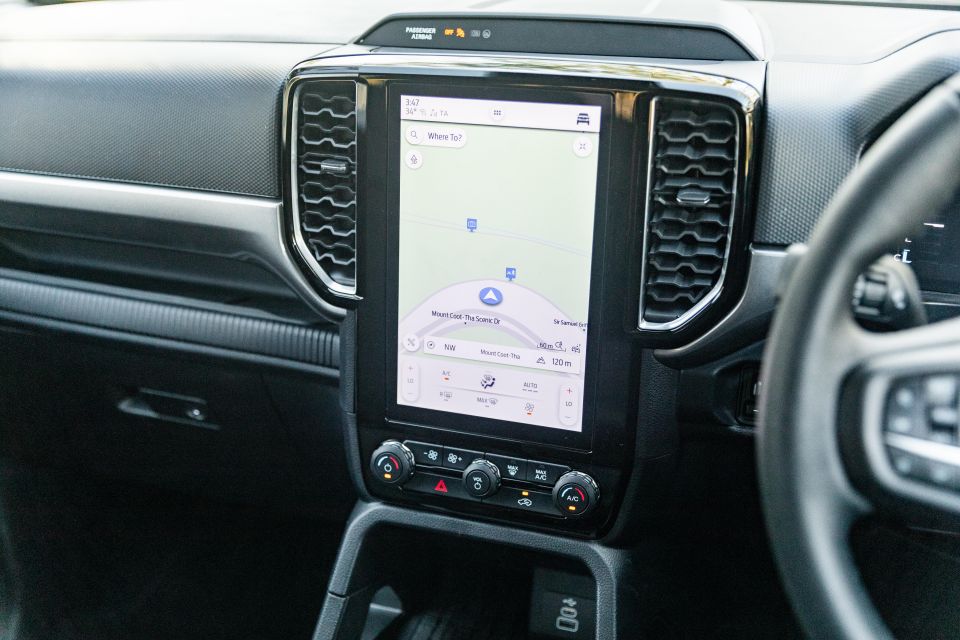
Ranger XL highlights:
Ranger XLS adds:
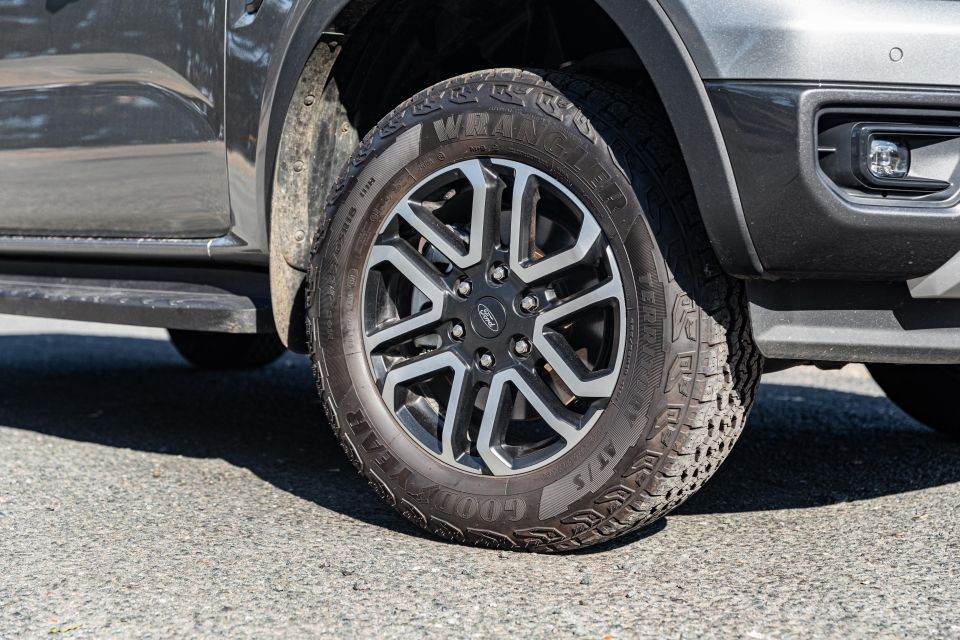
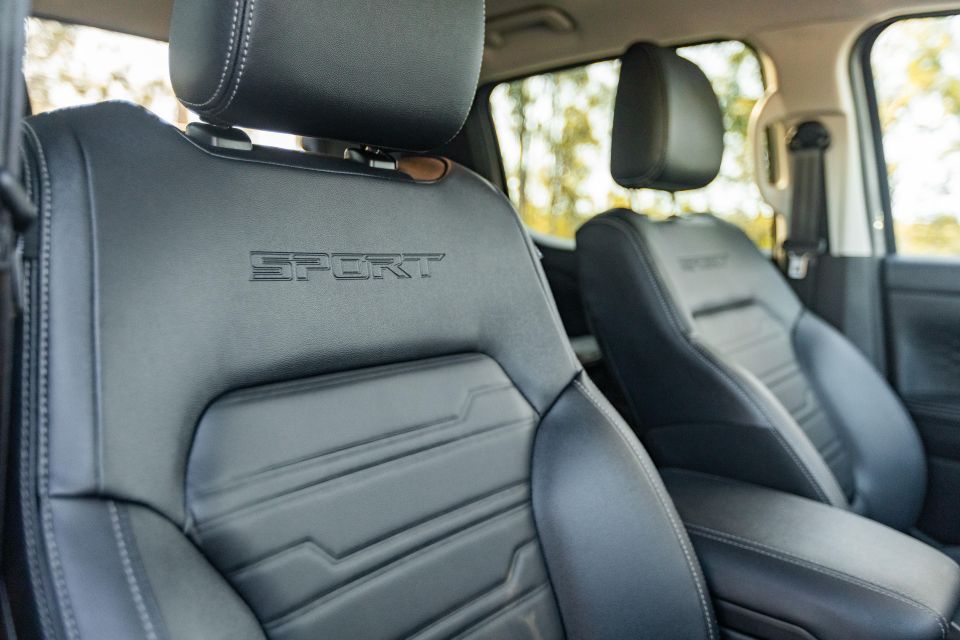
Ranger XLT adds:
Ranger Sport adds:
Step up to the Wildtrak and there are even more goodies, including a power roller shutter, larger 12-inch touchscreen, heated and eight-way power adjustable front seats and automated parking assist. But overall, the Ranger Sport compares favourably with even top-spec rivals.
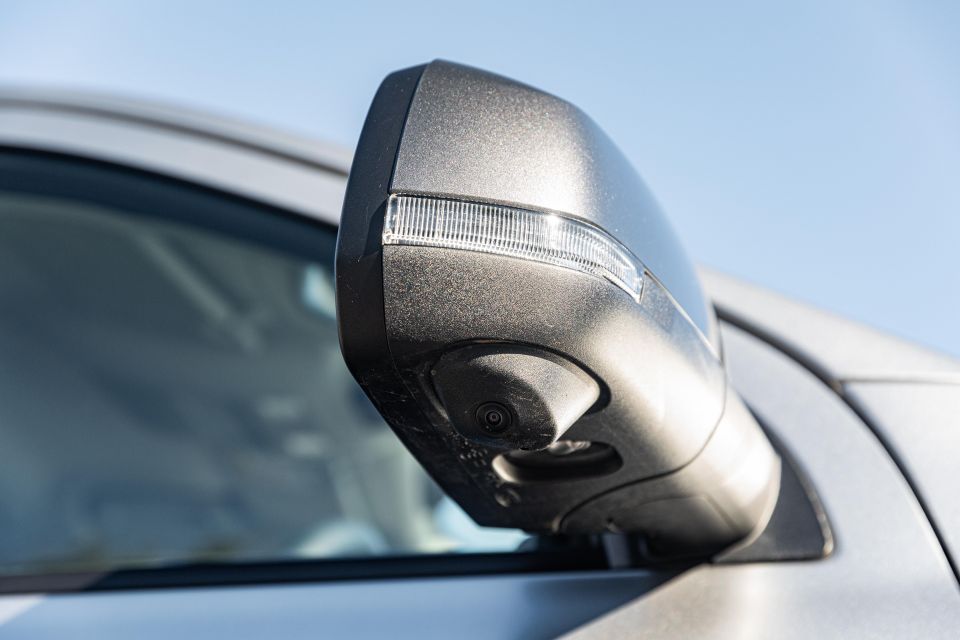

Our tester’s optional Touring Pack added the following:
For $1295, it’s a no-brainer. I’d tick that option box for the surround-view camera and zone lighting alone.
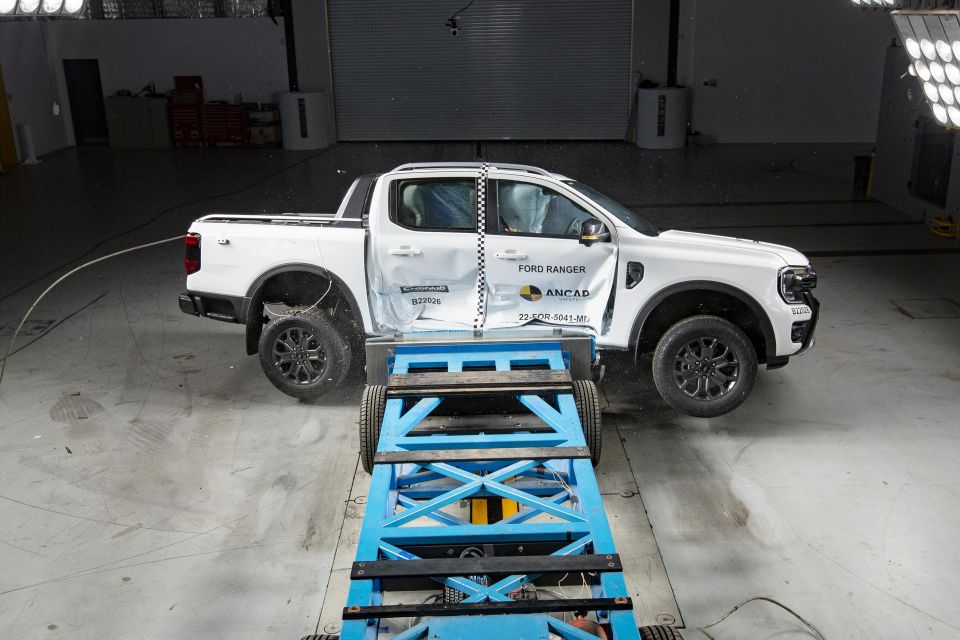
All variants of the 2023 Ford Ranger received a five-star ANCAP safety rating in September this year, except for the Ranger Raptor which remains unrated.
It received 84 per cent for adult occupant protection, 93 per cent for child occupant protection, 74 per cent for vulnerable road user protection, and 83 per cent for safety assist.
Vehicles built before August 20, 2022, will need a software update to their lane-keeping software to mirror the specifications of five-star vehicles. Ford says dealers will carry out the update at an owner’s next service.
Standard safety equipment includes:
Our tester also came with the optional surround-view camera. XLS and up get front parking sensors, while XLT and up get adaptive cruise control with stop/go, traffic sign recognition and lane centring.
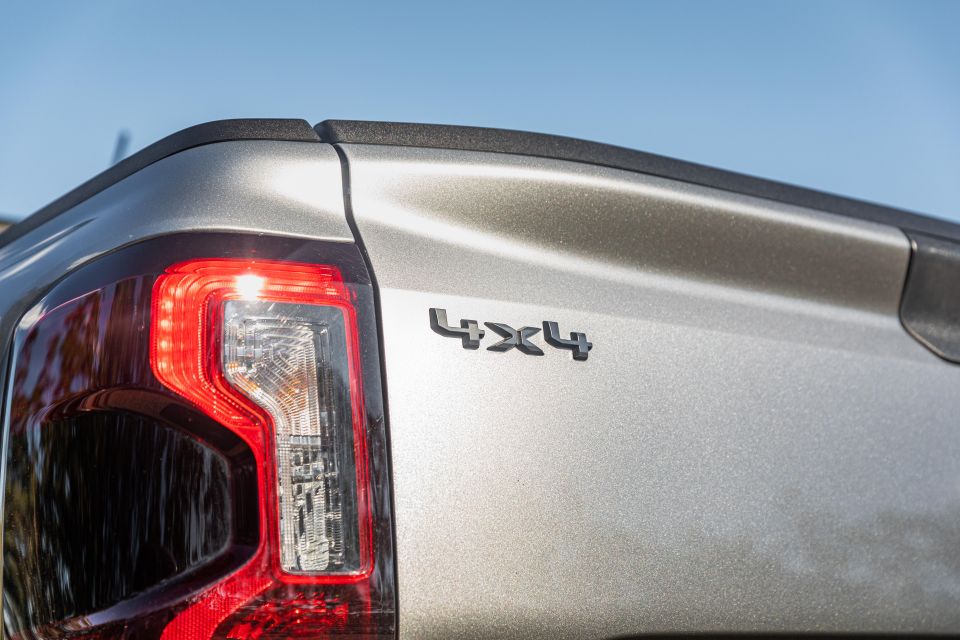
The Ranger is backed by a five-year, unlimited-kilometre warranty.
Servicing is required every 12 months or 15,000km, with the first four visits capped at $329 each. This equals $1316 over four years or 60,000km.
Some rivals, like Isuzu, offer more capped-price services, while Toyota offers more affordable visits to the workshop. But a D-Max costs more over four years ($2100), while a HiLux has shorter six-month/10,000km intervals that negate its price advantage ($1560 over four years).

Ford has done a terrific job with the new Ranger, making it even better to drive than before while adding more technology and more distinctive styling – and yes, that V6.
If you had never driven the new V6, you would have no idea how good it was. It’s the same reason I don’t drink fancy wine, or else I’ll lose my taste for the more affordable bottles.
That’s not to call the Bi-Turbo the Gossips Moscato of utes – its powertrain is still among the best of the four-cylinder flock.

But that $3200 premium seems entirely reasonable for the modest difference in fuel economy, the more sophisticated four-wheel drive system, and the greater punch.
If there was no V6, we’d unreservedly recommend the four as the segment leader. Unfortunately for the Bi-Turbo, there’s a more compelling option sitting across the showroom floor.
We just hope you don’t mind waiting for it.

Click the images for the full gallery
MORE: Everything Ford Ranger
Where expert car reviews meet expert car buying – CarExpert gives you trusted advice, personalised service and real savings on your next new car.
William Stopford is an automotive journalist with a passion for mainstream cars, automotive history and overseas auto markets.


Ben Zachariah
19 Hours Ago


Matt Campbell
1 Day Ago


Derek Fung
5 Days Ago


Damion Smy
8 Days Ago


Ben Zachariah
10 Days Ago


James Wong
16 Days Ago